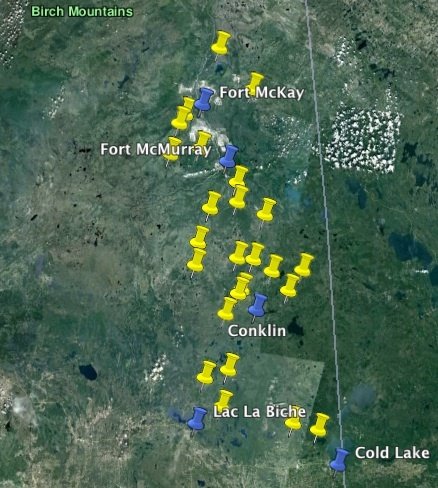The ABMI, the Ecological Monitoring Committee for the Lower Athabasca (EMCLA), the Bayne lab (Biological Sciences, U of A), and Bird Studies Canada have been running a pilot field project since March to test new protocols for monitoring specific rare species in the oil sands area. The focal species for this year’s work were the Yellow Rail, amphibians (especially Canadian Toads and Boreal/Western Toads), and owls (especially Barred Owls, Great Grey Owls, and Short-eared Owls). These are all species that are thought to be rare in northeastern Alberta, and affected by oil sands development.
The field pilot focused on comparing traditional methods of monitoring these species (road-based call-playbacks for owls, call-playbacks at wetlands for Yellow Rails, and call surveys for amphibians) with using automated recorders. The basic idea is that recorders could allow these species (and many other vocal animal species) to be monitored more efficiently than by traditional surveys, because recorders can be left out for many days at a time. Recorders were placed at all of the places where traditional surveys were done, and also placed at additional wetland and forest sites (away from roads). The surveys and recording stations were located in 29 areas throughout northeastern Alberta.

Overview of the 29 study areas used for the pilot project
If the pilot program is successful, then ultimately the ABMI could use this technology to monitor owls, Yellow Rails, and amphibians at our own monitoring sites. Recorder use could also be expanded to monitor other marsh birds, songbirds, bats, or really any animal that vocalizes.
Fieldwork wrapped up on July 20th, 2012 for this year. Now the technicians are off to the lab to listen to the many many hours of recordings that were collected throughout the season!
For more information on this project, contact Susy.

